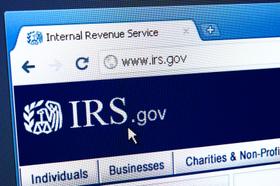Education is a crucial investment in a child's future, and as a parent, planning for their educational needs is essential. In this article, I explore the various educational savings accounts available to parents for private K-12 education. Understanding these options will help parents make informed decisions and effectively engage with their legal and financial professionals. Disclaimer: I am not a financial advisor or tax professional. The information given here is for educational purposes only. Always consult with your financial advisor, account or tax professional before making important financial decisions.
The History of Educational Savings Accounts
Educational savings accounts in the United States have evolved to address the need for specialized savings vehicles for education expenses.
Here is a brief history of educational savings accounts and the key legislative milestones:
- 1996: The Small Business Job Protection Act (SBJPA): The SBJPA, enacted in 1996, introduced a new type of account called the Education IRA (now known as the Coverdell Education Savings Account or ESA). This legislation allowed families to save for education expenses with certain tax advantages.
- 1997: Taxpayer Relief Act (TRA): The TRA, passed in 1997, expanded the scope of Education IRAs (Coverdell ESAs) by increasing the annual contribution limit from $500 to $2,000 per beneficiary and extending the use of funds to include elementary and secondary education expenses in addition to higher education.
- 1998: Internal Revenue Code Section 529: In 1998, Section 529 of the Internal Revenue Code was enacted, creating a new type of educational savings account known as the 529 College Savings Plan. This legislation allowed for tax-advantaged savings for higher education expenses.
- 2001: Economic Growth and Tax Relief Reconciliation Act (EGTRRA): The EGTRRA, enacted in 2001, made significant changes to the rules governing 529 plans. It increased the contribution limits, expanded the definition of qualified education expenses, and introduced tax-free withdrawals for qualified education expenses.
- 2006: Pension Protection Act (PPA): The PPA, passed in 2006, made several enhancements to 529 plans. It made the tax-free treatment of withdrawals permanent, allowed for tax-free rollovers between 529 plans, and added provisions for prepaid tuition plans.
- State-Specific Legislation: Each state has the authority to establish and manage its own 529 plan, which may have additional regulations and incentives specific to that state. Many states offer tax deductions or credits for contributions to their 529 plans.
529 College Savings Plans
One of the most popular educational savings accounts in the United States is the 529 College Savings Plan. Although this plan is specifically designed to save for higher education expenses, such as tuition, fees, books, and room and board. It offers several key advantages applicable to K-12 education expenses:
- Eligible Expenses: K-12 education expenses, such as tuition and fees, up to a limit of $10,000 per year per student, can be paid from a 529 College Savings Plan. However, note that state tax benefits for 529 plans may vary, and some states may not offer tax benefits for K-12 expenses.
- Tax Benefits: Contributions to a 529 plan grow tax-free, and withdrawals are tax-free for qualified education expenses.
- High Contribution Limits: 529 plans typically have high contribution limits, allowing parents to save substantial amounts over time.
- Flexibility: Parents can use the funds for qualified education expenses at any eligible college or university nationwide.
- State Tax Benefits: Many states offer tax deductions or credits for contributions to their 529 plans.
Legal Authority: The 529 College Savings Plan is authorized by Section 529 of the Internal Revenue Code. Each state manages its own 529 plan, and the details may vary.
Setting up a properly structured 529 ESA can be an effective way to save for education expenses, but seeking professional advice is important before doing so. - Source: Investopedia.
This video explains the 529 College Savings Plan.
Coverdell Education Savings Accounts (ESA)
Coverdell ESAs are another option for parents seeking to save for education expenses. These accounts are not limited to higher education and can also be used for private K-12 education expenses. Key features include:
- Tax Advantages: Contributions to a Coverdell ESA grow tax-free, and withdrawals are tax-free when used for qualified education expenses.
- K-12 Education Expenses: Coverdell ESAs allow funds to be used for private elementary, middle, and high school expenses.
- Lower Contribution Limits: Coverdell ESAs have lower annual contribution limits than 529 plans, currently set at $2,000 per year per beneficiary.
Legal Authority: Coverdell ESAs are authorized by Section 530 of the Internal Revenue Code.
A Coverdell education savings account (Coverdell ESA) is a trust or custodial account set up in the United States solely for paying qualified education expenses for the designated beneficiary of the account. This benefit applies not only to qualified higher education expenses but also to qualified elementary and secondary education expenses. Source: IRS.gov
Custodial Accounts (UTMA/UGMA)
Custodial accounts, established under the Uniform Transfer to Minors Act (UTMA) or the Uniform Gift to Minors Act (UGMA), provide an opportunity to save for a child's education. These accounts have broader use than just education, but they offer certain advantages:
- Tax Advantages: Investment earnings in custodial accounts are subject to favorable tax rates until the child reaches the age of majority.
- Flexible Use: While not exclusively for education, custodial accounts allow parents to save for various purposes, including education expenses.
- Parental Control: Parents act as custodians and manage the account until the child reaches the age of majority.
Legal Authority: Custodial accounts are governed by the Uniform Transfer to Minors Act (UTMA) or the Uniform Gift to Minors Act (UGMA), which vary by state.
Education IRAs
Formerly known as Education IRAs or Coverdell Education IRAs, these accounts have been largely replaced by the 529 College Savings Plans and Coverdell ESAs. However, some existing Education IRAs may still be maintained.
Legal Authority: Section 530 of the Internal Revenue Code provides the authority for Education IRAs.
Conclusion
Choosing the right educational savings account for your child's needs is significant. The 529 College Savings Plan and Coverdell Education Savings Account are two popular options for saving for higher education and private K-12 expenses, respectively. Custodial accounts also provide flexibility for saving toward schooling, among other purposes.
Always seek financial advice before setting up any type of savings account, including an educational one. A financial advisor can help determine the best savings plan for your needs and economic situation. They can also show how to maximize savings and minimize potential tax implications. When it comes to finances, research beforehand and make informed decisions.
Refrain from relying exclusively on the information available online. Instead, use online sites and articles such as this one to understand the subject at a basic level. Then, consult with legal and financial professionals to assess the options available, considering your specific circumstances and the most up-to-date legal authorities and regulations in your jurisdiction. Parents can help secure a bright future for their children's education by planning and leveraging these educational savings accounts.
Questions? Contact us on Facebook and Instagram. @privateschoolreview.com
#EducationalSavings #CollegePlanning #FinancialPlanning #privateschools














